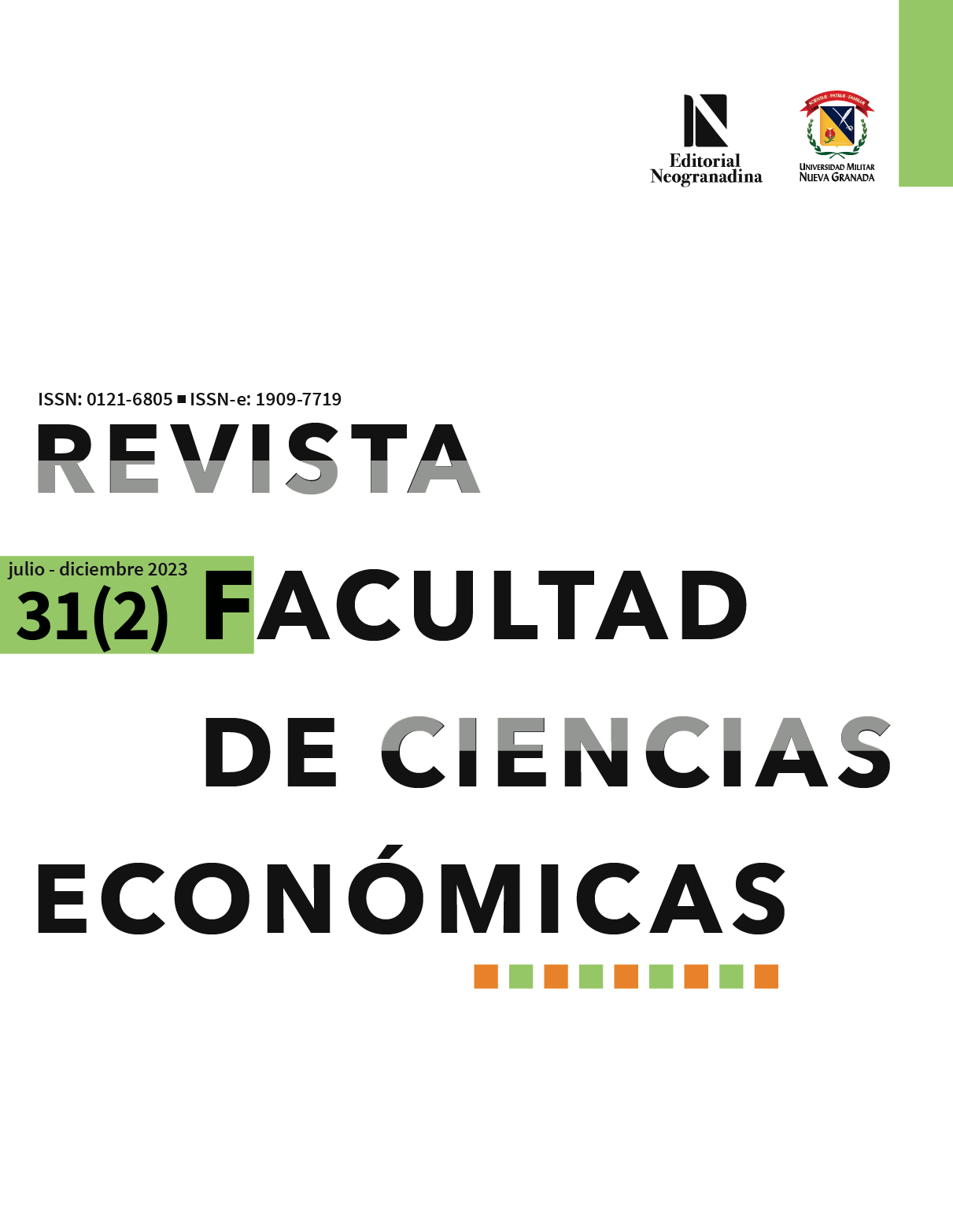Risco de automação de empregos na Colômbia:
Uma análise dos determinantes da vulnerabilidade dos trabalhadores à disrupção tecnológica
Resumo
O impacto das novas tecnologias nos resultados do mercado de trabalho tem sido extensivamente estudado em todo o mundo. No entanto, na Colômbia, existem poucos estudos que abordam sistematicamente este tema central para o futuro de nossa economia. Portanto, este estudo tem como objetivo analisar a proporção de trabalhadores cujas ocupações têm um alto risco de serem substituídas pela tecnologia na Colômbia. Também explora as características pessoais, ocupacionais e empresariais que tornam os trabalhadores vulneráveis à quarta revolução industrial. Utilizamos um Modelo Linear Generalizado (GLM) para demonstrar que mais de um terço dos trabalhadores têm empregos com alto risco de automação. No entanto, variáveis como o nível educacional, a formação profissional, o setor econômico, entre outros, atuam como fatores significativos que mitigam os impactos negativos do progresso tecnológico no emprego.
Downloads
Referências
Acemoglu, D. and Autor, D. (2011). Skills, tasks and technologies: Implications for employment and earnings. Handbook of Labor Economics, 4: 1043-1171. https://doi.org/10.1016/S0169-7218(11)02410-5
Acemoglu, D., and Restrepo, P. (2018). The race between Man and Machine: Implications of Technology for Growth, Factor Shares, and Employment. American Economic Review 108 (6). pp. 1488-1542.https://doi.org/10.1257/aer.20160696
Acemoglu, D., and Restrepo, P. (2019). Automation and new tasks: how technology displaces and reinstates labor. Journal of Economic Perspectives, 33(2), 3-30. DOI: https://doi.org/10.1257/jep.33.2.3
Acemoglu, D., and Restrepo, P. (2020). Robots and jobs: Evidence from US labor markets. Journal of political economy, 128(6), 2188-2244. https://doi.org/10.1086/705716
Aghion, P., Jones, B. and Jones, C. (2017). Artificial Intelligence and Economic Growth. NBER Working Paper, 23928, National Bureau of Economic Research.https://doi.org/10.3386/w23928
Aghion, P., Antonin, C., Bunel, S., and Jaravel, X. (2020). What are the labor and product market effects of automation? New evidence from France. From: https://sciencespo.hal.science/hal-03403062/file/2020-aghion-what-are-the-labor-and-product-market-effects-of-automation.pdf
Arntz, M., Gregory, T., and Zierahn, U. (2016). The risk of automation for jobs in OECD countries. DOI:https://doi.org/10.1787/5jlz9h56dvq7-en
Autor, D., and Dorn, D. (2013). The growth of low skill service jobs and the polarization of the US labor market. American Economic Review 103 (5). pp. 1553-1597. DOI: 10.1257/aer.103.5.1553
Autor, D., Levy, F., and Murnane, R.J. (2003). The skill content of recent technological change: an empirical exploration. Quarterly Journal of Economics. 118 (4), pp. 1279-1333. DOI: https://doi.org/10.1162/003355303322552801
Brambilla, I., César, A., Falcone, G., Gasparini, L., and Lombardo, C. (2021). The risk of automation in Latin America (No. 281). https://www.econstor.eu/handle/10419/250370
Boustan, L. P., Choi, J., and Clingingsmith, D. (2022). Automation after the assembly line: Computerized machine tools, employment and productivity in the United States (No. w30400). National Bureau of Economic Research.https://doi.org/10.3386/w30400
Chang, J. H., and Huynh, P. (2016). ASEAN in transformation the future of jobs at risk of automation (No. 994906463402676). International Labour Organization. From: https://www.ilo.org/wcmsp5/groups/public/---ed_dialogue/---act_emp/documents/publication/wcms_579554.pdf
DANE. (2019). Microdatos Gran Encuesta Integrada de Hogares GEIH. From: https://microdatos.dane.gov.co//catalog/599/get_microdata
Doménech, R., García, J. R., Montañez, M., and Neut, A. (2018). Afectados por la revolución digital: el caso de España. Papeles de Economía Española, (156), 128-145. From: https://dialnet.unirioja.es/servlet/articulo?codigo=6519001
Eckardt, M. S. (2022). Minimum wages in an automating economy. Journal of Public Economic Theory, 24(1), 58-91.https://doi.org/10.1111/jpet.12528
Gravina, A. F., and Pappalardo, M. R. (2022). Are robots in rich countries a threat for employment in emerging economies? Economics Letters, 221, 110888. https://doi.org/10.1016/j.econlet.2022.110888
Frey, C. B., and Osborne, M. A. (2017). The future of employment: How susceptible are jobs to computerization? Technological forecasting and social change, 114, 254-280. DOI: https://doi.org/10.1016/j.techfore.2016.08.019
Hawksworth, J., Audino, H., and Clarry, R. (2017). The Long View: How will the global economic order change by 2050. London, UK: PWC. From: https://www.pwc.com/gx/en/world-2050/assets/pwc-the-world-in-2050-full-report-feb-2017.pdf
Ing, L. Y., and Zhang, R. (2022). Automation in Indonesia: Productivity, Quality, and Employment. In Robots and AI (pp. 275-309)https://doi.org/10.4324/9781003275534-9
Katz, R., Callorda, F., and Jung, J. (2023). The impact of automation on employment and its social implications: evidence from Chile. Economics of Innovation and New Technology, 32(5), 646-662. https://doi.org/10.1080/10438599.2021.1991798
Li, J., An, Z., and Wang, Y. (2023). On the Substitution and Complementarity between Robots and Labor: Evidence from Advanced and Emerging Economies. Sustainability, 15(12), 9790. https://doi.org/10.3390/su15129790
Lima, Y., Strauch, J. C. M., Esteves, M. G. P., de Souza, J. M., Chaves, M. B., and Gomes, D. T. (2021). Exploring the future impact of automation in Brazil. Employee Relations: The International Journal, 43(5), 1052-1066.https://doi.org/10.1108/ER-08-2020-0364
Lorenz, H., Stephany, F., and Kluge, J. (2023). The future of employment revisited: how model selection affects digitization risks. Empirica, 50(2), 323-350. https://doi.org/10.1007/s10663-023-09571-2
Minian, I., and Martínez, Á. (2018). El impacto de las nuevas tecnologías en el empleo en México. Revista problemas del desarrollo, 49 (195), 27-53. DOI: https://doi.org/10.22201/iiec.20078951e.2018.195.64001
Papke, L. E., and Wooldridge, J. M. (1996). Econometric methods for fractional response variables with an application to 401 (k) plan participation rates. Journal of applied econometrics, 11(6), 619-632. https://doi.org/10.1002/(SICI)1099-1255(199611)11:6<619::AID-JAE418>3.0.CO;2-1
Santos, I., Monroy-Taborda, S. and Moreno, M. (2015) Technological change and labor market disruptions: evidence from developing world. Background paper for the World Development Report 2016. From: https://conference.iza.org/conference_files/worldb2015/monroy-taborda_s22138.pdf

Copyright (c) 2023 Revista Facultad de Ciencias Económicas

Este trabalho está licenciado sob uma licença Creative Commons Attribution-NonCommercial-NoDerivatives 4.0 International License.











